 By Lasair ní Chochlain and Eva Perry Urban trees provide important habitats for insects and other arthropods. Dr. Paola Olaya-Arenas, an adjunct professor at Universidad Icesi, presented the results of her research on Bogotá’s urban trees and associated insect communities to the University of Maryland’s Department of Entomology this April. Dr. Olaya-Arenas and collaborators sampled insects associated with Ficus americana Aubl. located in parks and on sidewalks in three urban areas in Bogotá, Colombia. A diverse and abundant community of herbivores, predators, and parasitoids was sampled, and information about their feeding habits, other host trees, and damage to plant tissue is described in Dr. Olaya-Arenas et al., 2022 bilingual publication “Insects associated with urban trees in Bogotá (Colombia): exploring their diversity and function.” This publication can be downloaded from the following link (Electronic book link), and it is a good guide for citizens and visitors of the city. By: Amanda Brucchieri and Helen Craig
On any given day, Dr. Tanisha Williams might be found exploring the desert in search of bush tomatoes, analyzing historical herbarium samples, or nurturing a vibrant community of Black botanists. What underscores all her work is the elevation and exploration of the relationships between people and plants, especially in the context of human mediated climate change caused by anthropogenic greenhouse gases (IPCC, 2013). In her work, Dr. Williams investigated how this change is affecting the phenology and diversity of plants, particularly in the context of climate change and Traditional Ecological Knowledge (TEK). written by: Ben Gregory and Minh Le
Vampires do exist – they’re just tiny and have six legs. Blood-feeding insects, such as mosquitoes, feed on the blood of other animals to complete their life cycle. Blood provides many essential nutrients that aren’t easy to get elsewhere in nature. Unfortunately for us, blood-feeding insects can carry pathogens that cause human diseases, like malaria, West Nile, and Zika. For this reason, many scientists are interested in learning how the process of blood feeding works, and what we might be able to do to keep ourselves safe from it. One of these scientists, Dr. Chloé Lahondère of the Department of Biochemistry at Virginia Tech, has spent years learning about one unusual element of blood-feeding that you probably haven’t considered: how to stay cool. Your blood is hot – about 100°F in your body! Given that insects are cold-blooded animals and must maintain their body temperature below a certain level, the question arises “how does a blood-feeder feed on piping hot blood without overheating? Dr. Lahondère is using the kissing bug (Figure 1, Left) to answer this question.
[Seminar Blog] Designing and managing agricultural landscapes for insect driven ecosystem services4/2/2024
 Dr. Nate Hann Dr. Nate Hann written by: Brendan Randall & Angela Saenz A brisk, foggy morning; the sun rises on a midwest farm. Corn stalks sway for as far as the eye can see, seemingly the only life around. If one looks carefully, however, one will find the farm is teeming with life. Dr. Nate Haan is fascinated by the diversity of organisms on farms and how we can understand their ecology to improve farm sustainability and conservation of native biodiversity. Now an assistant professor in the Entomology Department at the University of Kentucky (UK), he is excited to answer fundamental questions about how farm management practices affect insects. In his seminar talk, Dr. Haan presented various approaches to test his central research question–does management affect insects in agricultural landscapes?  A picture of Dr. Medina A picture of Dr. Medina written by: Jenan El-Hifnawi and Michael Adu-Brew Academic institutions pride themselves on principled support for evidence-based solutions. This support, however, does not always seem to apply to institutional approaches to Diversity, Equity, and Inclusion (DEI) argues Dr. Raul Medina, a professor and member of the Diversity Science Research Cluster at Texas A&M. written by: Angela Saenz and Eva Perry
Islands have been the backdrop of considerable scientific research and advancement for centuries, and not just because they tend to double as a nice vacation spot. What makes many islands so special to science and scientists is their isolation from other land masses, limiting the movement of species to and from them. This isolation provides a rare open-air opportunity to study how evolutionary processes shape ecological communities: think Darwin’s finches and the Anolis lizards of the Caribbean, or, in Dr. Natalie Graham’s case, arthropods on the Hawaiian archipelago.  Figure 1. Culex mosquito. Photo: Ben Burgunder Figure 1. Culex mosquito. Photo: Ben Burgunder written by: Allison Huysman, Kathleen Evans & Taís Ribeiro As entomologists, we are often asked what mosquitoes are good for. These commonly hated insects - which are especially pesty during the summer months - are actually fascinating research subjects. Mosquitoes are extremely diverse, with around 3,500 species, and are also ecologically relevant. Several species are responsible for biological control (by eating other mosquito larvae that cause diseases) and others even pollinate! Unfortunately, some species drink human blood, and some of these are vectors of deadly diseases. Studying these vectors can help improve the prediction of diseases and help to control outbreaks. Here at the University of Maryland Entomology Department, students in the Fritz lab research different ways to predict the spread of Culex mosquitoes (Figure 1) and the viruses they can spread. In their Research in Progress talks, M.Sc student Ben Burgunder and Ph.D student Ben Gregory presented their work modeling the community composition and thermal tolerance of Culex mosquitoes. written by: Megan Ma and Eric Hartel
Scientists can propose how and why species evolve by studying the shapes of anatomical structures across animals. They can investigate what morphologies may correlate with specific functions and how the interplay between an organism’s environment and its morphology can facilitate diversification. In a well-known example, Charles Darwin observed many species of finches with varying beak shapes and sizes. A correlation was found between beak morphology and diet type: insectivorous finches had long, sharp beaks to probe and capture prey, while seed-eating finches had stronger, shorter beaks to crack open seed casings. With modern tools, continued research on these finches reveals greater information on their evolution, such as how beak shape is also correlated with altered vocalizations. It has also helped explain how different species with different beak morphologies coexist in the same habitat1. These beaks are an example of how shapes evolve to accommodate the survival and fitness of an organism, and this study system is an example of how the incorporation of modern techniques allows for the comprehensive study of shape evolution. written by: Michael Adu-Brew & Ben Burgunder
When most people think of mathematicians, scenes of squawking flocks of birds being herded into arenas, tiny ticks being carefully painted with nail polish, and an army of permethrin-soaked undergraduate researchers do not come to mind. These people do not know Dr. Holly Gaff. On Friday, October 27th, Dr. Gaff, Professor and Chair of Biological Sciences at Old Dominion University (ODU), spoke to the UMD Department of Entomology about her exciting research on the ticks of southeastern Virginia. A mathematician by training, Dr. Gaff was ‘bitten’ by the tick research bug when she realized how mathematical modeling and simulation could help decipher the complex and unpredictable life histories of ticks that threaten public health across the country. by: Alireza Shokoohi, Robert Salerno and Leo Kerner
Native pollinators are the largely unsung heroes of our ecosystems, but they face an alarming risk that we've long underestimated. New research from Dr. Vera Krischik’s lab shows that the situation may be more dire than expected. Dr. Krischik is an Associate Professor and Extension Specialist at the University of Minnesota investigating the impact of neonicotinoid insecticide residues on pollinators such as wild bees and butterflies. Her research is crucial for understanding and protecting the lives of these beneficial insects that we often take for granted. By Amanda Brucchieri and Helen Craig
Imagine biking down a road, along the edge of a cornfield with stalks reaching far above your head. Drifting across your path, riding the breeze, is a monarch butterfly. It flutters and then glides as butterflies do, looking for the next patch of flowers to feed and rest. Bursting from this peaceful scene comes a team of scientists with nets, scopes, and chirping walkie-talkies. They are on a mission. They are tracking the same monarch that had just coasted by using radio telemetry. written by: Leo Kerner & Angela Saenz
Imagine a lush, highly diverse field of papaya that requires limited chemical interference to control insect and weed pests. This is the reality of living mulch. Dr. Robin Gomez, an associate professor of Weed Science at the University of Costa Rica, studies sustainable pest control methods in tropical ecosystems. He suggests that the key to successful implementation of sustainable agricultural practices relies on acquiring specialized knowledge of each system. When you see a honey bee buzzing around, or while you spread honey on your toast, have you ever wondered how old the honey bees that are visiting flowers or making honey are? The answer is: it depends. Worker honey bees assume different jobs in their life, and that role changes with age. Young workers take care of the colony, nursing and feeding the larvae. Later they become guards, protecting the hive. When the worker bee is even older, they take on the job of exploring the outdoors and foraging nectar and pollen for the colony. So, a bee pollinating a flower is probably older than the bee that made your honey.
written by: Mariom Carvajal
Insects are critical to the function of ecosystems and provide benefits to humans, such as pollination and biological control. Although many insects hold great economic and cultural value to humans and benefit our lives, some reduce agricultural productivity and others pose risks to human health. To find new ways to manage these pests, some Entomologists turn to the study of invisible cellular processes or insect-microbe interactions. Two research in progress talks presented on March 10th 2023 by University of Maryland researchers, Dr. Anastasia Naumenko and Mr. Brendan Randall, focused on how knowledge of these microscopic processes can be used for the benefit of agricultural and public health systems. By Ben Gregory
These days, most Americans don’t worry too much about malaria, the deadly disease caused by the Plasmodium parasite and spread by Anopheles mosquitoes (Figure 1, left). That wasn’t always the case, however. In fact, during the nineteenth century, malaria was one of the leading causes of death in the United States, affecting nearly every corner of the country, but particularly the south (Hong 2008). Fortunately for those of us living here today, malaria is extremely rare. This is thanks to sweeping control and public health measures taken by the CDC and its predecessor organizations in the early and mid-twentieth centuries. But, more recently, another mosquito-borne disease of concern has spread across the country: West Nile fever. [Seminar Blog] Caste-switching jumping ants: studies on the plasticity of reproduction and lifespan5/3/2023
By Megan Ma
Dr. Francisco Carmona-Aldana (he/him), a postdoctoral scholar at the New York University School of Medicine, recently presented his research on “Ants: studies on the plasticity of reproduction and lifespan” which focuses on how ants obtain tradeoffs between reproduction and longevity through caste-switching. In the collaborative projects led by Dr. Danny Reinberg and Dr. Claude Desplan, he and his team study ants of the species Harpegnathos saltator as an experimental model to understand how aging can be regulated. H. saltator ants are peculiar in that workers can become pseudo-queens and take reproductive control of their colonies when a queen is absent. A group of 4 to 6 ants will undergo antennal dueling, a behavioral interaction to determine who will become pseudo-queens, or “gamergates.” These gamergates will have active ovaries, lay eggs, and extend their lifespans to accommodate this reproductive caste-switching. They live for 3 years in comparison to their lifespan as a former worker (1 year) and the maximum lifespan found in queens (5 years). In addition to altering the duration of their lifespans, gamergates have the potential to revert back to their worker states (induced in laboratory conditions). They can return to their original, non-reproductive role to perform their worker duties and no longer produce eggs. Written by: Lindsay Barranco
Dr. Krisztina Christmon has measured approximately 100,000 mites during the course of her PhD studies at the University of Maryland, which may very well be a world-record. She recently presented her research exit seminar entitled “Varroa destructor: abiotic and biotic correlates to body size, and the effects of size and host type on mite tolerance to acaricide exposure” and described how her inquiry into mite size variability began in 2016, as a new PhD student in the UMD Bee Lab. The UMD Bee lab administers the National Honeybee Disease Survey (NHDS), and maintains collected data from large and small-scale beekeepers across the United States in order to detect honey bee disease and monitor for invasive species. Invasive species, particularly varroa mites, pose a serious threat to honey bee health which in turn, potentially impacts the important pollination services honey bees provide to fruit and vegetable growers nationwide. written by: Amanda Rae Brucchieri and Robert Joseph Salerno
"The good thing about science is that it’s true whether or not you believe in it.” -Neil deGrasse Tyson. Can this quote be contested? To answer this question, one must consider the way scientific knowledge is continually evolving. The scientific process is self-correcting, meaning the acceptance of ideas should be based on available data. What is often overlooked are the influences of politics, policy, culture, and community in the process of science and the acceptance of scientific data. Dr. Fred Gould, a distinguished professor of Entomology at North Carolina State University whose relationship with the University of Maryland extends back over 30 years, addressed a full hall about this shadowed intersection of science and society. In his talk, Gould dove into the 16-year ban of Mendelian genetics in the Soviet Union and the history that resulted in the ban’s conception. 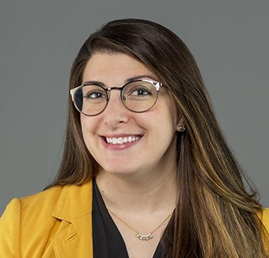 written by: Lasair ni Chochlain, Eric Hartel Addressing the varied needs of graduate students as not only learners but also researchers and teachers is a complex job. The University of Maryland and the Department of Entomology are doing their best to tackle this issue head on in 2023. To learn more about how the disabilities of graduate students are accommodated at UMD, we invited the Director of Accessibility and Disability Service (ADS), Tessa Cahill, to come to the Entomology Dept. colloquium to present “Disability Compliance and Accommodations: A Graduate Student Experience.” Tessa is the inaugural director of ADS, which is currently going through a period of growth and expansion to better serve the campus community. These changes are the result of an an external review by the Association on Higher Education and Disability (AHEAD) and support from UMD’s Administration that has led to ADS hiring more full-time staff and expanding their reach across many departments. By embracing this review and the changes ADS has made, the University of Maryland has been able to provide a significant increase in support. Improved communication between counselors, students, and faculty is also helping to standardize and improve the quality of services offered. Tessa first spoke about “how we got here” on a national level and then about the role and services of ADS on the university level. Research-In-Progress talks are important opportunities for entomology graduate students to develop the communication skills necessary to become researchers in entomology and related disciplines. At the first research-in-progress talks of the spring 2023 semester, three graduate students presented their research, which cover different subfields of entomology: Theresa Menna, a 2nd-year Biological Sciences-CBBG PhD student in the Fritz Lab, Minh Le, a 2nd-year Entomology PhD student in the Pick Lab, and Max Ferlauto, a 4th-year Entomology PhD candidate in the Burghardt lab.
Every spring, visitors flock to Washington, DC, to see over a thousand Japanese cherry trees in full bloom along the Potomac River. This ephemeral event draws massive numbers of viewers and concludes once the trees have shed their petals, sometimes just a week after blooming. We don’t often think about petals after they’ve fallen, but recent research suggests that these petals are more than just visually pleasing. Dr. Rebecca Hale is an urban ecologist who leads the Watershed Science Lab, a team focused on investigating urban stream dynamics to understand how cities can develop more sustainably. Dr. Hale and her team have recently found evidence that petals from flowering trees can have a tremendous impact on nutrient levels in surrounding water systems. Even in urban settings, these water systems are a foundational component of the ecosystems we rely on.
written by: Ebony Michelle Argaez
Big data is the fuel of the 21st century, it is a part of our everyday lives; we produce and consume it. One example is the use of various types of data acquired from social media apps that are then used to deliver ads to targeted audiences. Yet, big data is also used in academia, health, science, and government for addressing research questions. What is big data? Big data can be measured by its volume, variety, and velocity. Big data contains high volume in the form of many individual observations. Variety refers to many attributes associated with these observations. Velocity is the repetition of that volume and variety across some other dimension (e.g., time or populations). When preexisting big data sets are used in ecological studies, it is called ecoinformatics [1]. Dr. Michael Crossley, an Assistant Professor and Agricultural Entomologist in the Department of Entomology and Wildlife Ecology at the University of Delaware, uses ecoinformatics to understand how insect ecology is affected by changes in agricultural landscapes. written by: Taís Ribeiro and Brendan Randall
It is crucial for graduate students to learn how to design and execute scientific research. Using this research as an informative tool that affects both the livelihoods of people and addresses public needs is essential to communicating science. The ongoing educational partnership between the public and scientists is known as extension and it is one of the pillars of the Department of Entomology. At the first Entomology Research in Progress Seminars, we heard about the work of two researchers that not only perform scientific research but are actively involved in the dissemination and application of their research to solve problems faced by growers and the public. The postdoc Dr. Nathalie Steinhauer and her work in extension in Beekeeping operations, and the PhD Candidate Maria Cramer, who works in agricultural environments. Both of these researchers are passionate about teaching and learning from stakeholders by showing their scientific results and seeing how applied science affects people’s lives.  Photo Credit: Mohamed Sallam Photo Credit: Mohamed Sallam written by: Megan Ma This week’s colloquium speaker, Dr. Mohamed Sallam, is a disease and arthropod vector ecologist who has worked in a variety of positions. His previous appointments include working as a research scientist for developing integrated pest management programs, senior analyst at USEPA (United States Environmental Protection Agency), and entomologist for the U.S. Navy. His background has led him to a position in Bethesda, MD as an Assistant Professor at Uniformed Services University (USU), where he is mentoring students and facilitating safer conditions in deployed military environments and U.S. military bases. Specifically, he is seeking ways of preventing disease transmission by developing models to reduce arthropod-disease vector-host contact. This can include efficiently treating uniforms – identifying regions of the body that are more likely to be targeted by mosquitoes minimizes the cost of treating full uniforms while maximizing the protection of high-risk areas of vector-host contact. To consider the full range of environmental and public health hazards, Dr. Sallam emphasizes the importance of understanding micro- and macrohabitats. This begins with research that can link models with the biology of your organism of interest. |
Categories
All
Archives
June 2024
|
Department of Entomology
University of Maryland
4112 Plant Sciences Building
College Park, MD 20742-4454
USA
Telephone: 301.405.3911
Fax: 301.314.9290
University of Maryland
4112 Plant Sciences Building
College Park, MD 20742-4454
USA
Telephone: 301.405.3911
Fax: 301.314.9290


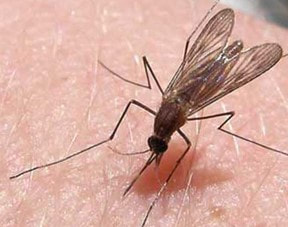
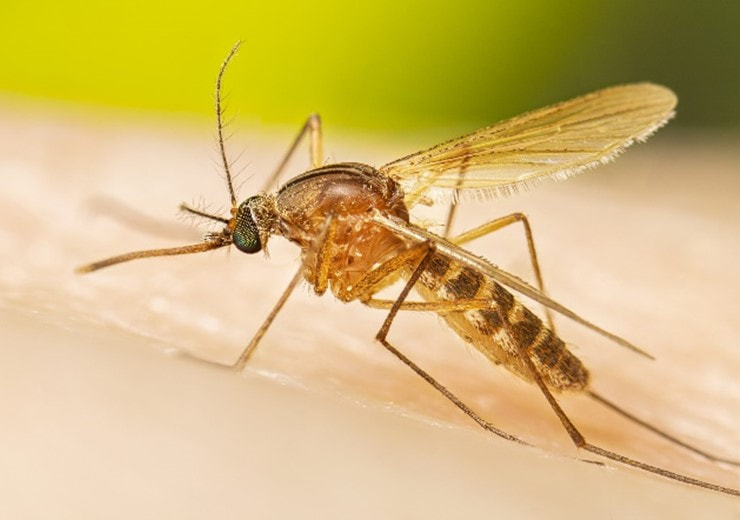
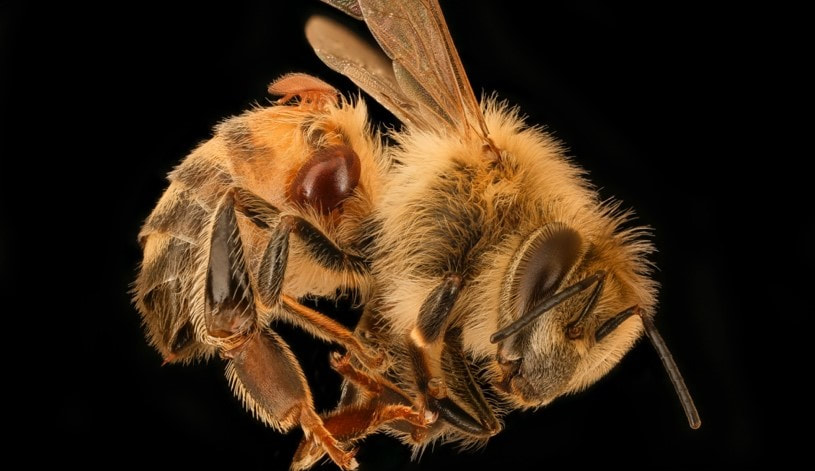
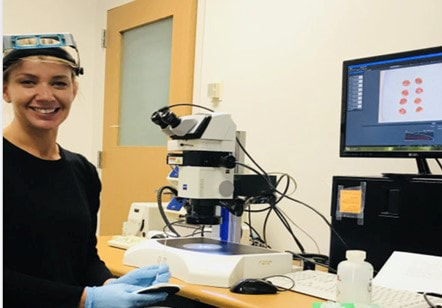
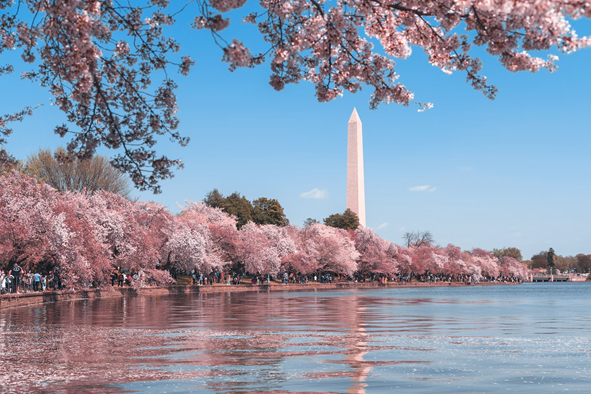
 RSS Feed
RSS Feed




